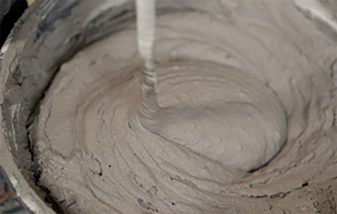
okt . 14, 2024 09:45 Back to list
Properties and Applications of Redispersible Polymer Powder in Modern Construction and Adhesives
Redispersible Polymer Powder Enhancing Construction and Coating Applications
Redispersible polymer powder (RDP) has emerged as a significant innovation in the fields of construction, coatings, and adhesives. Understanding its composition, benefits, and applications is essential for professionals in various industries, particularly those involved in construction materials and finishing processes.
At its core, redispersible polymer powder is a dry powder derived from the polymerization of various monomers. When rehydrated, it forms a stable, aqueous dispersion. This unique property makes RDP a versatile additive that can enhance the performance of various materials. Commonly used types of polymers for RDP include vinyl acetate-ethylene (VAE), styrene-acrylic, and ethylene-vinyl acetate (EVA) copolymers. The choice of polymer often depends on the desired performance characteristics of the end product.
Redispersible Polymer Powder Enhancing Construction and Coating Applications
Another significant advantage of RDP is its ability to enhance water retention. By incorporating RDP into formulations, manufacturers can create products that remain workable for prolonged periods, even in hot or dry conditions. This characteristic is crucial in avoiding premature drying during application, which can compromise the integrity and finish of the final product. Improved water retention also contributes to better hydration of the cement, leading to increased strength and durability of the cured material.
re dispersible polymer powder

RDP also plays a vital role in improving the workability of various formulations. When mixed with powders, it facilitates easier application and leveling, which is particularly beneficial for professional contractors and DIY enthusiasts alike. The smoother consistency provided by RDP can enhance the overall aesthetic of finishes, be it plaster, stucco, or tile grout.
In addition to construction materials, redispersible polymer powders are extensively utilized in coatings. In paint formulations, RDP can enhance properties such as wet adhesion, scrub resistance, and flexibility. The inclusion of RDP allows for the creation of high-performance exterior and interior paints that resist peeling, flaking, and color fading, thereby extending the lifespan and appearance of painted surfaces.
Sustainability is a growing concern in every industry, and the use of RDP aligns with this trend. By optimizing water usage and reducing waste during application, RDP can contribute to more sustainable building practices. Moreover, RDP formulations often have reduced levels of volatile organic compounds (VOCs), an essential factor as regulations surrounding environmental impact grow stricter.
Despite the numerous advantages of redispersible polymer powder, users must consider the formulation and processing conditions carefully. The performance of RDP can be influenced by factors such as the type of binder used, particle size, and storage conditions. Proper handling and adherence to recommended guidelines are critical to ensure optimal results.
In summary, redispersible polymer powder serves as a transformative additive in the construction and coating industries. Its ability to enhance adhesion, elasticity, workability, and water retention makes it an indispensable component in modern building materials. As the demand for high-performance materials continues to rise, RDP will likely play an increasingly vital role in meeting these expectations. For professionals looking to improve the quality and durability of their products, the use of redispersible polymer powder is an investment in performance and sustainability that cannot be overlooked.
-
Unlocking the Benefits of HPMC Products: A Gateway to Versatile Applications
NewsAug.07,2025
-
Unleashing the Potential of HPMC Ashland: A Comprehensive Look
NewsAug.07,2025
-
Tile Bonding Cellulose: The Key to Superior Adhesion and Durability
NewsAug.07,2025
-
Hydroxypropyl Methylcellulose Powder: The Versatile Component in Modern Pharmaceuticals
NewsAug.07,2025
-
Hydroxyethyl Cellulose: The Versatile Solution for Various Industries
NewsAug.07,2025
-
Hydroxyethyl Cellulose (HEC): The Versatile Polymer for Various Applications
NewsAug.07,2025







